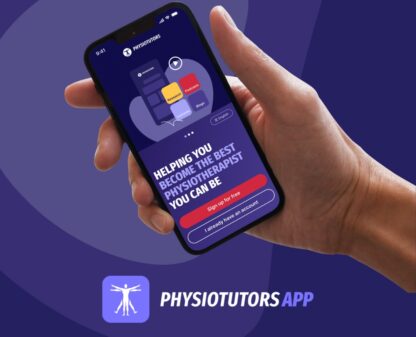Carpal Tunnel Syndrome

Body Chart

Tingling sensation/paresthesia in thumb until middle finger radiating into forearm. Bilateral presentation possible
Background Information
Patient Profile
- Female > male
- 40-60 years old
- Prevalence in female cleaning staff 48%
- Pregnant women up to 62%
Pathophysiology
Oftentimes, the symptoms present in patients with occupations that involve repetitive and forceful hand tasks. This may result in swelling of the tendons narrowing the carpal tunnel and compromising the median nerve. Practically anything that can cause such narrowing may be a possible cause of CTS:
- Trauma: radial fracture, hemorrhage, carpal bone luxation
- Tumors: lipoma, ganglion, osteophytes
- Swelling of tendons
- Arthritis
Furthermore, there are risk factors associated with peripheral nerve pathologies such as CTS. These are pregnancy, obesity, hypothyroidism, renal failure, diabetes, and rheumatoid arthritis
Course
The natural course of CTS is reported to be rather unfavorable with 32% – 58% of patients having a negative outcome at a one-year follow-up.
The course of conservatively managed CTS is highly variable but reported to improve over time. However, there are reports of an 85% chance of relapse between one to four years after treatment has ended.
History & Physical Examination
History
Long history, without trauma: patients tend to wait long before consulting a doctor due to intermittent symptom course. With trauma: trauma can be cause of symptoms.
- Radiating
- Deep
- Electrifying
- Unpleasant tingling sensation
- Numbness
- Problems with fine hand tasks
- Leading symptom: numbness of hands
Physical Examination
Inspection
Muscular atrophy m. abd. pollicis, wrist appears quadratic
Active Examination
Strength: deficits in m. abd pollicis brevis & m. opponens pollicis. Possibly bottle sign (loss of strength with gripping)
Fine motor tasks: Difficulties to grip small objects
Functional Assessment
Not always easy to demonstrate; leaning or end range palmar flexion; in advanced stages possible bottle sign
Special Testing
Neurodynamics
ULTT 1 and 2
Passive Examination
ROM & Joint Play: Wrist, thumb, elbow, shoulder, C-Spine: no specific abnormatlies in CTS; C-Spine PPIVM PPAVM exam to rule out spine involvement
Additional Tests
Ultrasound and/or electrical neurography should be done for further diagnostics as Sens/Spec of special tests is poor
Differential Diagnosis
- Radicular Syndrome C6/C7
- TOS
- Polyneuropathy
- Median nerve lesion or PEP (e.g. pronator syndrome)
- Polymyalgia
- Raynaud’s Syndrome
Treatment
Strategy
Conservative or surgical management. In both cases the goal is to decompress and create room for the nerve to move. Surgical release only if conservative management yields no success
Interventions
Conservative: Taping, bracing, neurodynamic techniques, carpal bone mobilizations, wrist mobilizations, ultrasound, corticosteroids
No clear evidence as to which conservative therapy is most effective
Surgical: Splitting of retinaculum to decompress the nerve
References
- Mondelli, M., et al., Carpal tunnel syndrome and ulnar neuropathy at the elbow in floor cleaners. Neurophysiol Clin, 2006. 36(4): p. 245-53.
- Ablove, R.H. and T.S. Ablove, Prevalence of carpal tunnel syndrome in pregnant women. WMJ, 2009. 108(4): p. 194-6.
- H, A., Diagnostik und Therapie des Karpaltunnelsyndrom, A. G, Editor. 06/2012,Deutsche Handchirurgie.
- Wong, S.M., et al., Discriminatory sonographic criteria for the diagnosis of carpal tunnel syndrome. Arthritis Rheum, 2002. 46(7): p. 1914-21.
- Buch-Jaeger, N. and G. Foucher, Correlation of clinical signs with nerve conduction tests in the diagnosis of carpal tunnel syndrome. J Hand Surg Br, 1994. 19(6): p. 720-4.
- Katz, J.N., et al., The carpal tunnel syndrome: diagnostic utility of the history and physical examination findings. Ann Intern Med, 1990. 112(5): p. 321-7.
- Sucher, B.M. and A.L. Schreiber, Carpal tunnel syndrome diagnosis. Phys Med Rehabil Clin N Am, 2014. 25(2): p. 229-47.
- Bekkelund, S.I. and C. Pierre-Jerome, Does carpal canal stenosis predict outcome in women with carpal tunnel syndrome? Acta Neurol Scand, 2003. 107(2): p. 102-5.
- Kamolz, L.P., et al., Carpal tunnel syndrome: a question of hand and wrist configurations? J Hand Surg Br, 2004. 29(4): p. 321-4.
- Marshall, S., G. Tardif, and N. Ashworth, Local corticosteroid injection for carpal tunnel syndrome. Cochrane Database Syst Rev, 2007(2): p. CD001554.
- Feuerstein, M., et al., Clinical management of carpal tunnel syndrome: a 12-year review of outcomes. Am J Ind Med, 1999. 35(3): p. 232-45.


